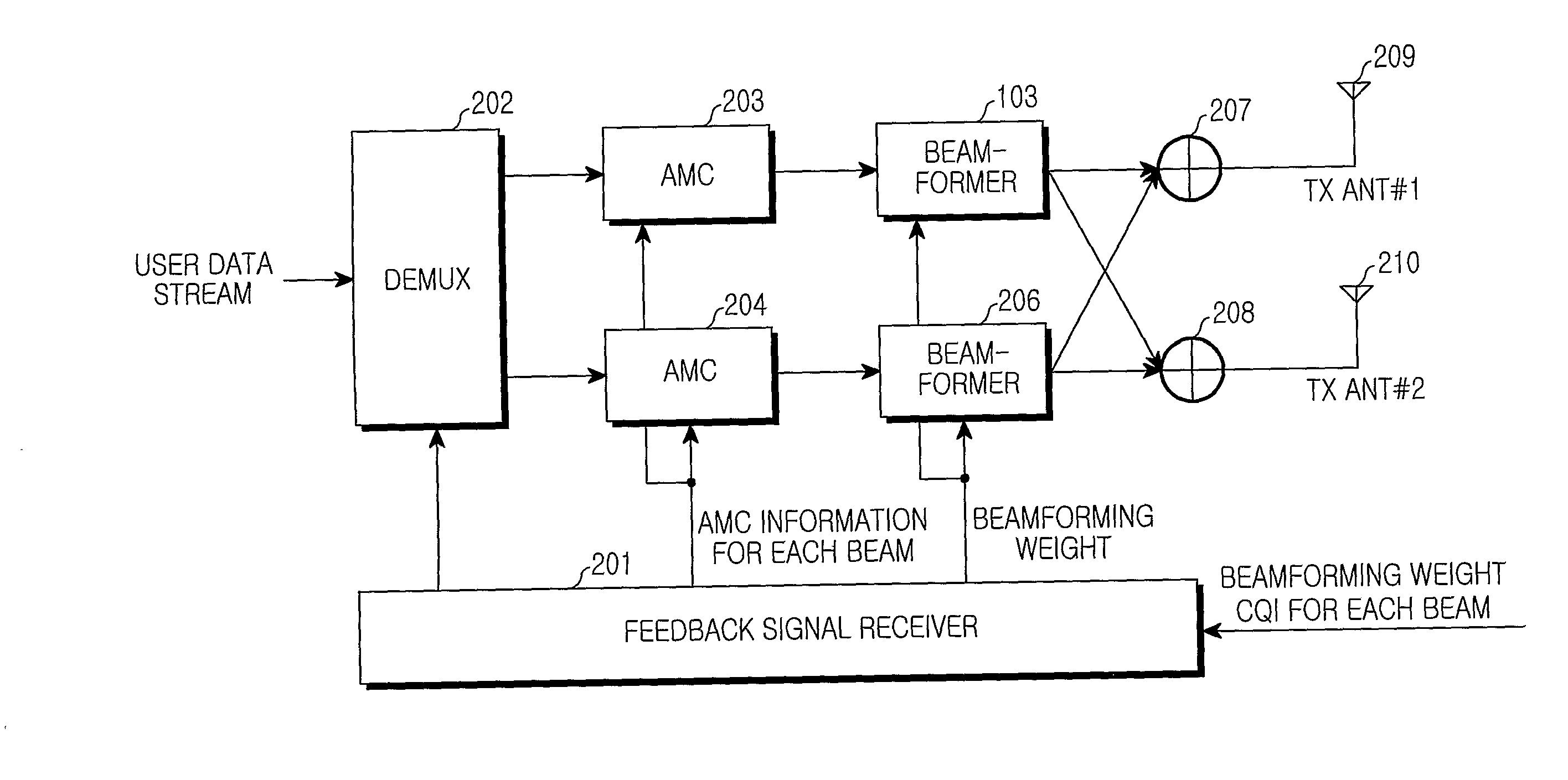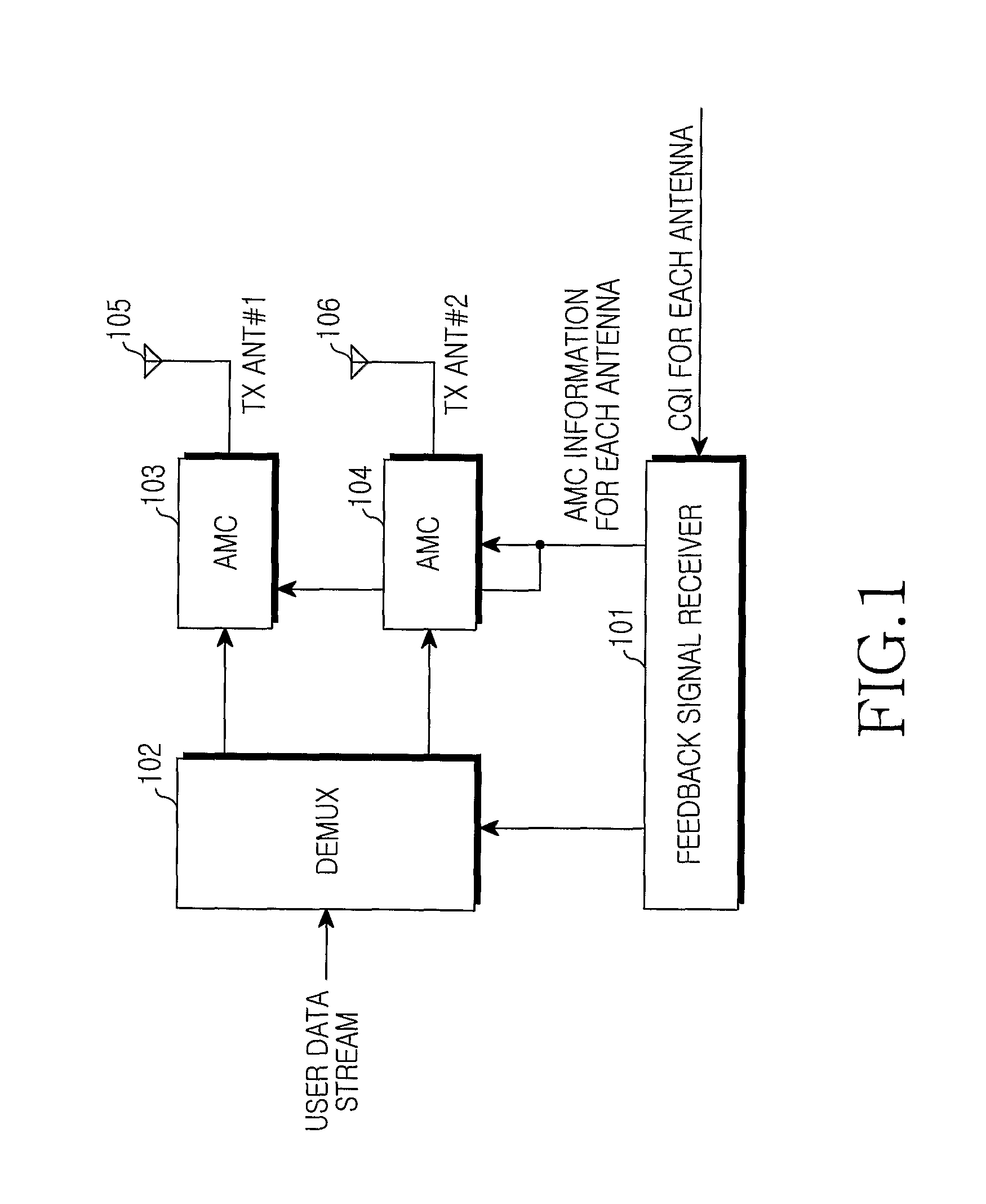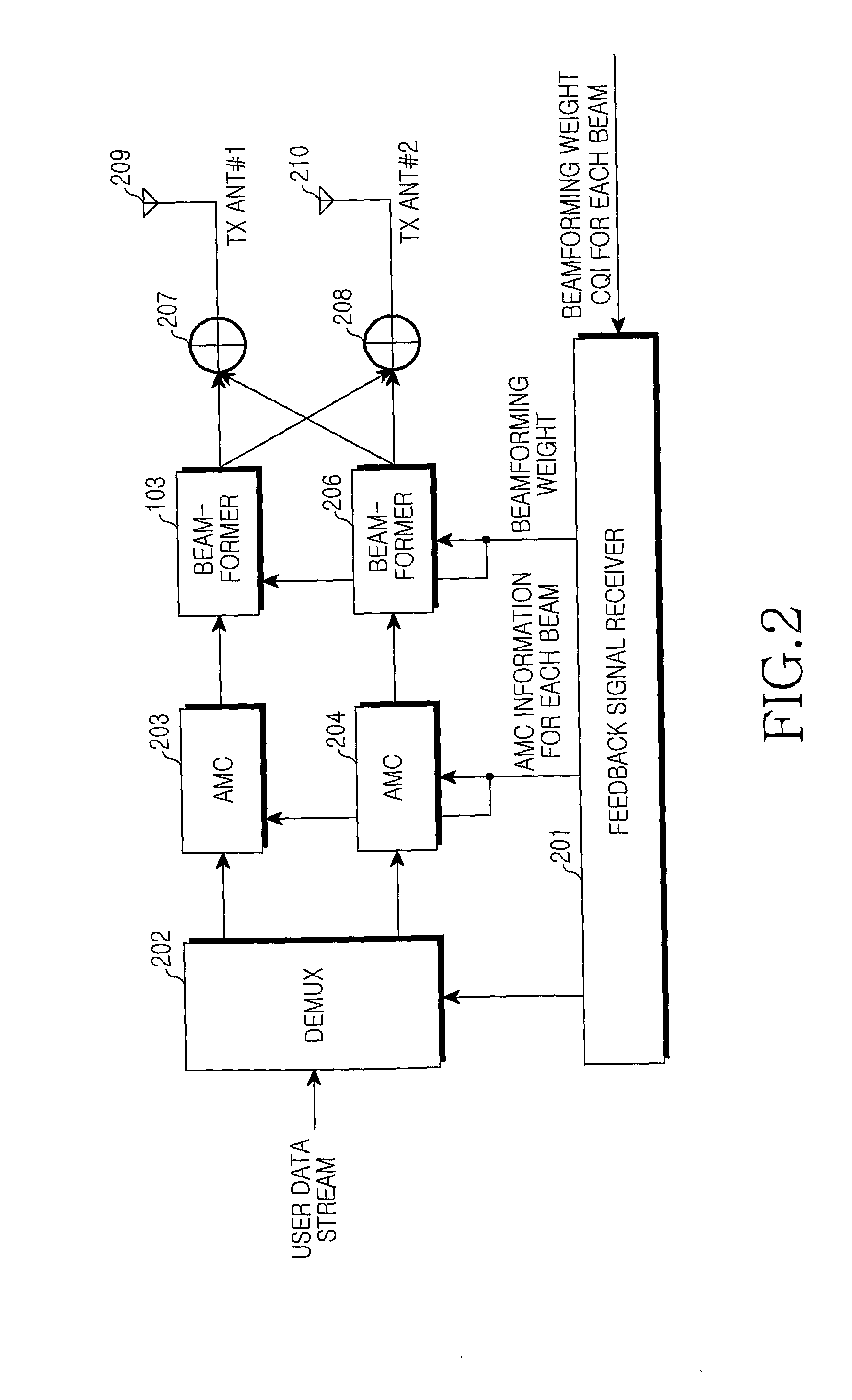Apparatus and Method for Transmitting and Receiving Packet Data Using Multiple Antennas in a Wireless Communication System
- Summary
- Abstract
- Description
- Claims
- Application Information
AI Technical Summary
Benefits of technology
Problems solved by technology
Method used
Image
Examples
embodiment
[3] Embodiment
[0093]FIG. 7 is a block diagram illustrating a structure of a transmitter for a multi-antenna system according to an embodiment of the present invention. With reference to FIG. 7, a detailed description will now be made of an operation of a transmitter for a multi-antenna system according to an embodiment of the present invention. The transmitter of FIG. 7 is equal in structure to the transmitter of FIG. 5 except that the transmitter of FIG. 7 has two transmission antennas. The same elements in the drawings are denoted by the same reference numerals.
[0094]Because the number MT of transmission antennas is 2, a basis transform matrix set of Equation (2) can be used.
S={E(1)=12[111-1],E(2)=12[11i-i]}(2)
[0095]In Equation (2), i=√{square root over (−1)}. Basis transform matrixes E(1) and E(2) make two bases. That is, N1=N2=2. If a receiver for a user selects E(1) as a preferred basis transform matrix, a first basis and a second basis are created with weights of Equation (3)....
PUM
 Login to View More
Login to View More Abstract
Description
Claims
Application Information
 Login to View More
Login to View More - R&D
- Intellectual Property
- Life Sciences
- Materials
- Tech Scout
- Unparalleled Data Quality
- Higher Quality Content
- 60% Fewer Hallucinations
Browse by: Latest US Patents, China's latest patents, Technical Efficacy Thesaurus, Application Domain, Technology Topic, Popular Technical Reports.
© 2025 PatSnap. All rights reserved.Legal|Privacy policy|Modern Slavery Act Transparency Statement|Sitemap|About US| Contact US: help@patsnap.com



